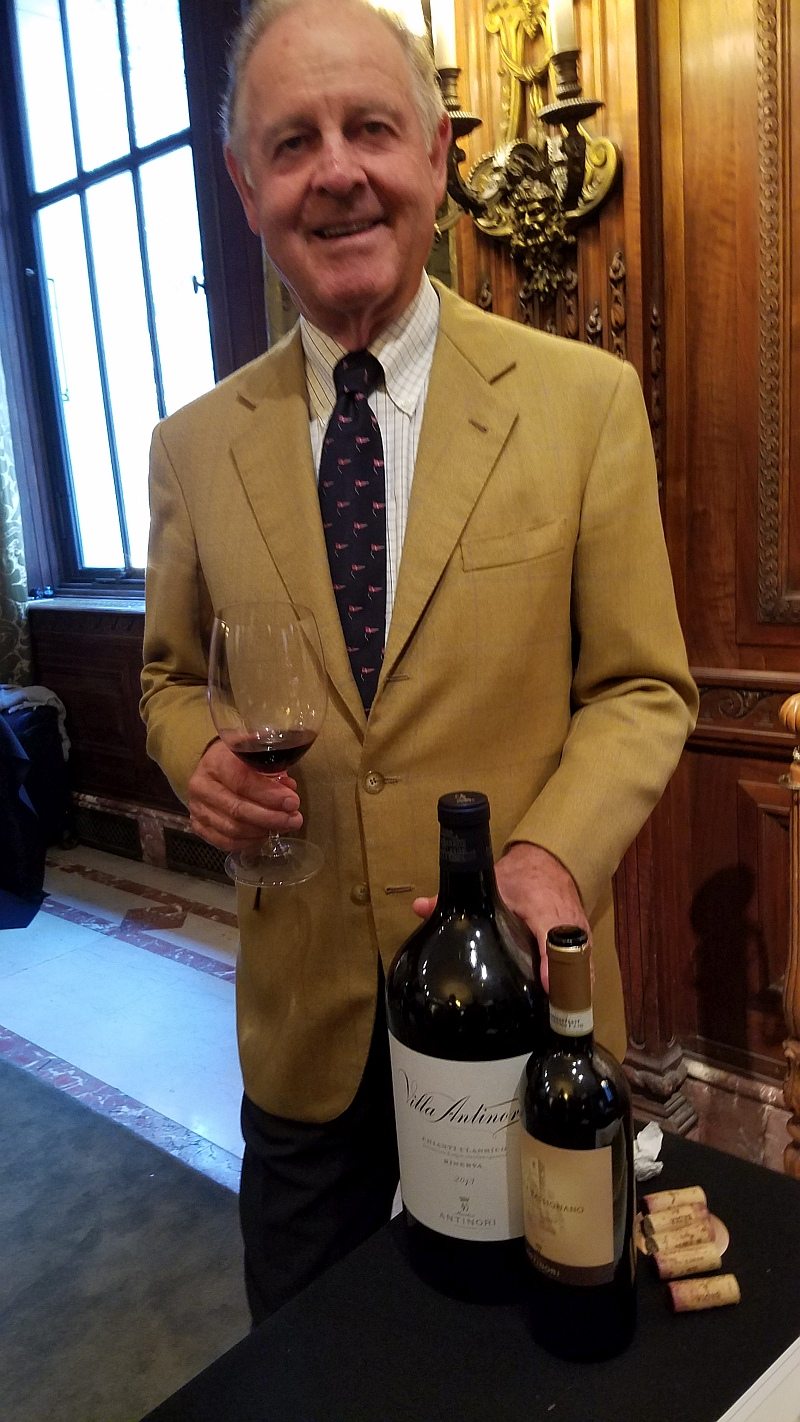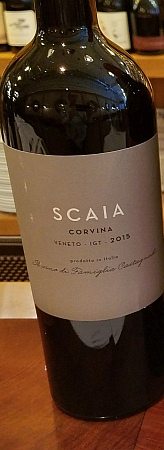A few weeks ago, I was at a tasting with Piero Antinori who presented his super Tuscan–and one could fairly say super praised–Tignanello and Guado al Tasso wines.
I was pleased by the mature and delicious 1997 Tignanello and the superbly crafted 2013 rendition of this internationally acclaimed wine. And to those who like well-made New World-styled Tuscan wines, the 2007 and 2013 Guado al Tasso spoke in a clear voice. But as impressive as these wines were, what held my attention were Antinori’s Chianti Classico wines: 2013 Villa Antinori Chianti Classico Riserva and the 2010 Badia a Passignano Gran Selezione
That these two wines are often overlooked is ironic: They are Chianti wines anchored to a classification founded in the 13thcentury by the League of Chianti, yet they lack cachet as many wine consumers and critics fawn over the new and frown at the familiar.
The Antinori family has been making wine in the Chianti area for more than 630 years. After a trip to Bordeaux in 1928, Niccolo Antinori made his Chianti Classico from only estate grown grapes and like the great chateaux he visited, put the image of the family’s Tuscan villa on the label of his new Bordeaux-shaped bottles.
The 2013 Villa Antinori Chianti Classico Riserva is produced from the family’s new vineyard and winery in San Sano, between the village Gaiole in Chianti and Siena. The blend of 90% sangiovese and 10% cabernet sauvignon has cherry, rose and soy (Italians describe it as balsamic) aromas that are true to sangiovese’s identity. The modern inclusion of cabernet sauvignon might feel necessary, but it does not interfere with the bright cranberry and streaming acidity that every generation of Antinoris would know is the classic definition of Chianti Classico. 90 points. It’s a good value at less than $30.
Badia a Passignano, or the Abbey at Passignano is Antinori’s other source of excellent Chianti Classico. Bought in 1987, the 800-acre estate is still used by Vallombrosian monks.
In 2014, the Italian wine authorities granted the Chianti Classico producers’ request for a higher classification with the Gran Selezione category. Its designation means the 2010 Antinori Badia a Passignano Chianti Classico Gran Selezione is made from only estate-grown grapes (Chianti Classico allows the use of purchased grapes), was aged for at least two and a half years (compared with one year for Chianti Classico and two years for Riserva, respectively). Reflecting the requirement for riper grapes, it is a minimum of 13% alcohol.
The 2010 Antinori Badia a Passignano Chianti Classico Gran Selezione is pure sangiovese. Red-fruit, rose and soy aromas float from the glass, and tasty, ripe raspberry and cherry flavors are carried with bright acidity giving this 7-year old wine a youthful profile. 92 points. A wide range of prices of $40 to $65 requires shopping before buying.
Mention sparkling wines and Champagne is the first thought of most wine consumers. But great value, history and pleasing bubbles are waiting for you, if you know Limoux.
Cremant de Limoux’s history dates to 1531, when the Benedictine monks at the abbey of Saint-Hilaire recorded making sparkling wine. This was 137 years before the 22-year-old Benedictine monk Dom Pierre Perignon arrived at the abbey of Hautvillers in the Champagne region, where poorly made still wine was the fare. Ironically, Dom Perignon is now world-renowned for the Champagne bearing his name, while the sparkling wine Saint-Hilaire is only known by wine geeks.
But you don’t have to be a wine geek to enjoy the good-valued, well-made 2014 Gerard Bertrand Cremant de Limoux Brut Cuvee Thomas Jefferson. It’s a blend of 70% chardonnay, 15% chenin blanc, 10% mauzac (the indigenous grape that used to dominate Limoux sparkling wine) and 5% pinot noir. The wine honors our former ambassador to France and third president of the United States, who unquestionably was the greatest oenophile to occupy the White House.
Bertrand grows his Limoux grapes at the highest elevation in southern France, where hot days and cool nights bring ripe fruit flavors and balancing acidity. Fermenting in stainless-steel tanks preserves the crisp, mineral character and apple and citrus flavors. A year of bottle aging adds a nice, round texture. No doubt Jefferson would have enjoyed the 2014 Limoux with a Chesapeake Bay crab salad at the White House or Monticello, his Virginia home and vineyard.
2014 Gerard Bertrand Cremant de Limoux Brut Cuvee Thomas Jefferson would make the Benedictine monks proud. 90 points. At $14 to $19 you won’t forget this sparkling wine.
In a little more than 20 years, the four brothers of the Castagnedi family have created an outstanding winery, Tenuta Sant’Antonio. Located outside of the Valpolicella Classico zone, their award-winning Amarone della Valpolicella Campo dei Gigli is the flagship wine.
Corvina is the primary red grape of the region and Amarone. The brothers use it to make Scaia, a pure corvina wine at an amazingly low price. Made from grapes of young vines (three to 10-years-old), fermented and aged in stainless-steel tanks, the 2015 Famiglia Castagnedi Scaia Corvina Veneto is bursting with floral, mint, black-cherry and black-pepper aromas. Delicious ripe raspberry and cherry flavors seasoned with black-pepper and bay leaf-like tastes bring outstanding complexity. This fruit-forward wine is instantly likeable and irresistible. And, if all of this isn’t enough to make it memorable, I promise you, you’ll never forget the price: $9 to $15. 88 points.
Photos by John Foy











Leave A Comment